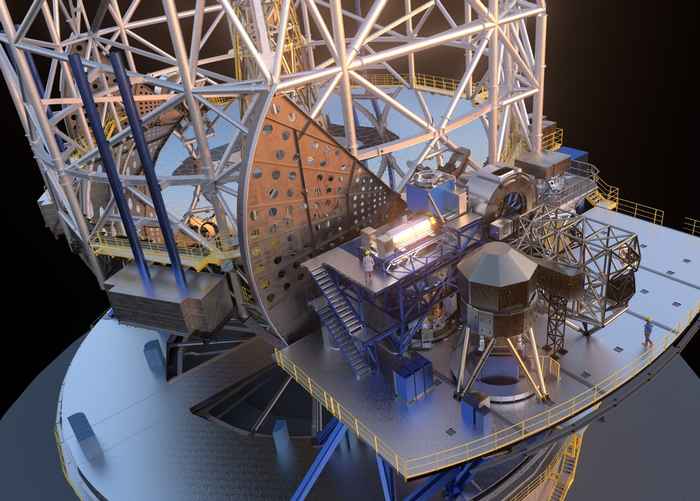Large investment for development and construction of astronomical instruments for Extremely Large Telescope
20 February 2023

The European Southern Observatory's (ESO) Extremely Large Telescope is under construction on Cerro Armazones in the Atacama Desert in northern Chile. With a mirror diameter of 39 meters, the telescope will be the largest optical infrared telescope in the world, and is expected to make its first observations in 2028. The ELT will detect and investigate Earth-like planets around other stars, and will make fundamental contributions to cosmology, the study of stars in the Milky Way and beyond, black holes, and the evolution of distant galaxies, down to the very first galaxies in the very young universe of only 380,000 years after the Big Bang.
The NL-ELT programme involves Dutch contributions to three instruments in different stages of development: METIS, MOSAIC and EPICS.
METIS is a mid-infrared instrument of which NOVA leads the international consortium. The final design was recently approved, and it will be one of the ELT's first operational instruments. Part of the grant will be used for the actual building of the instrument. METIS will be the 'Swiss pocketknife' for mid-infrared astronomy. Among other things, it is being developed to detect Earth-like planets. METIS consists of two components: a camera and a spectrograph.
MOSAIC is a multi-object spectrograph, and will use the ELT's enormous luminosity and sharpness to observe hundreds of stars and galaxies simultaneously, and make detailed spectra of them, in both visible and near-infrared light. NOVA will provide the two visual spectrographs for this purpose in collaboration with an institute in Germany. UvA Professor Lex Kaper is the NL-PI for MOSAIC.
NOVA will also develop technology for EPICS, an instrument that will not be built until the mid-2030s. EPICS will be able to study Earth-like planets near other stars in detail. To realize this challenging ambition, part of the grant will fund a multi-year technology development programme.
METIS is complementary to the James Webb Space Telescope, and can observe planets much closer to the star thanks to its greater image resolution. Both Webb and METIS look at comparatively warm planets in the infrared. Later, EPICS will be able to see cooler planets due to the starlight they reflect.
According to principal investigator Ignas Snellen (Leiden Observatory), the construction of the ELT is "a great adventure". "When construction is completed in the second half of this decade, we astronomers will have at our disposal an extraordinary facility that exceeds the capabilities of current telescopes by 2 to 3 orders of magnitude, especially for faint objects. With its light-gathering capability combined with excellent spatial and spectral resolving power, the ELT will transform astronomy in all its facets. From observations of the first stars, the formation of galaxies to whether we are alone in the universe."
Much of the development and construction of the instruments takes place at the NOVA Optical-Infrared Instrumentation Group in Dwingeloo. A team of 25 specialists is working on the instruments. Because the Dutch contribution to the ELT instrumentation involves three different instruments, each at a different stage of their development, very efficient use can be made of the group's expertise and facilities. Engineers who first worked on the design of METIS then put the knowledge gained to use for MOSAIC, and later also for EPICS. Similarly, engineers who make and assemble the components, will work on the instruments one after the other.
NWO awarded the grant as part of the National Roadmap Large-Scale Scientific Infrastructure.
Extremely Large Telescope